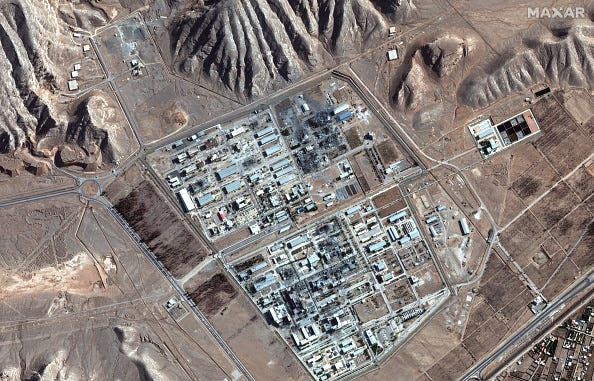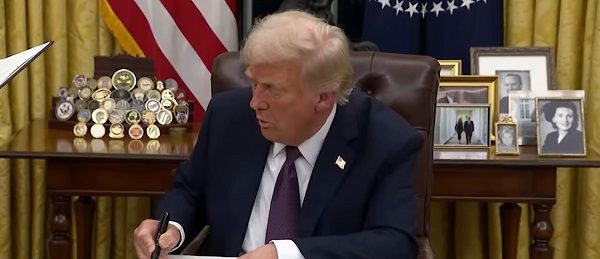Economy
Indigenous Loan Program Could Pave the Way for More Natural Resource Economy Ownership

From EnergyNow.ca
“We want to be part of the oil and gas industry”
Ottawa has promised a loan program for Indigenous communities to buy equity stakes in natural resource projects, but many questions are still unanswered.
Ottawa is currently under scrutiny as it prepares to incorporate an Indigenous loan-guarantee program into its 2024-2025 budget, aimed at assisting Indigenous communities in acquiring equity stakes in natural resource projects. This commitment was made in Finance Minister Chrystia Freeland’s fall economic statement on November 21.
The government will advance development of an Indigenous Loan Guarantee Program to help facilitate Indigenous equity ownership in major projects in the natural resource sector. Next steps will be announced in Budget 2024.
The federal budget is typically presented to Parliament in either February or March, with the 2023-2024 budget having been announced on March 28 last year. While Ottawa has engaged in consultations with Indigenous leaders and organizations, there remains a notable lack of specific details, including a critical issue – whether the program will permit investment in oil and gas projects.
The First Nations Major Projects Coalition, boasting over 145 members, strongly advocates for Indigenous peoples to have the autonomy to determine their investment choices without constraints imposed by Ottawa. Although the government did assert its commitment to ensuring Indigenous communities benefit from major projects within their territories on their own terms, First Nations groups worry that the loan-guarantee program might mirror the green restrictions of the current Indigenous loan program provided by the Canada Infrastructure Bank.
This existing program allows equity stakes only in infrastructure projects aligned with the bank’s investments, such as clean power, green infrastructure, broadband technology, and transportation. For some time, the First Nations Major Projects Coalition (FNMPC) and the Indigenous Resource Network have been at the forefront of campaigns urging federal loan guarantees to facilitate Indigenous participation in natural resource projects.
Sharleen Gale, Chair of FNMPC, argues that fossil fuel investments must be a component of any federal loan-guarantee program, as equity in the oil and gas industry can empower First Nations to thrive in alignment with their values.
“We want to be part of the oil and gas industry,” says Gale.
In 2022, the Indigenous Resource Network (IRN) initiated the “Ownership Changes Everything” campaign, advocating for Indigenous ownership in resource projects. This campaign calls upon Ottawa to implement a loan program modeled after similar initiatives in Alberta, Saskatchewan, and Ontario. Robert Merasty, highlights the challenges faced by Indigenous communities due to the Indian Act, which prohibits First Nations from using their land and assets as collateral. Consequently, they lack the necessary at-risk capital to secure favorable interest rates.
“The problems our communities are facing is that there are few mechanisms to access the necessary capital for investing in projects and having equity,” says Merasty.
In 2023, FNMPC penned an open letter to Finance Minister Chrystia Freeland, emphasizing the significance of advancing major resource projects for a successful energy transition and economic growth benefiting all Canadians. They also pointed out that the Indian Act remains a significant hurdle, preventing First Nations from leveraging their assets and land for borrowing.
FNMPC estimates that over the next decade, 470 major projects impacting Indigenous lands will require more than $525 billion in capital investment, with approximately $50 billion needed for Indigenous equity financing. An illustrative case from Alberta involved energy giant Enbridge, which partnered with 23 First Nation and Métis communities to sell an 11.57% interest in seven pipelines in northern Alberta. This partnership was made possible through a loan guarantee from the Alberta Indigenous Opportunities Corp., which provides financing to Indigenous communities seeking commercial collaborations, alongside various other financial supports.
Greg Ebel, CEO of Enbridge, has joined the campaign for a national program.
“Investment in the entire energy sector and many others could be accelerated by the immediate implementation of a federal Indigenous loan-guarantee program to ensure Canada’s Indigenous Peoples have a seat at the table while also having equity that helps them secure a more prosperous future,” says Ebel.
As we await further developments, the question remains: Will a federal loan-guarantee program come to fruition, one that encompasses loan guarantees for investments in natural gas and oil? We are hopeful for a positive outcome.
Business
Trump confirms 35% tariff on Canada, warns more could come
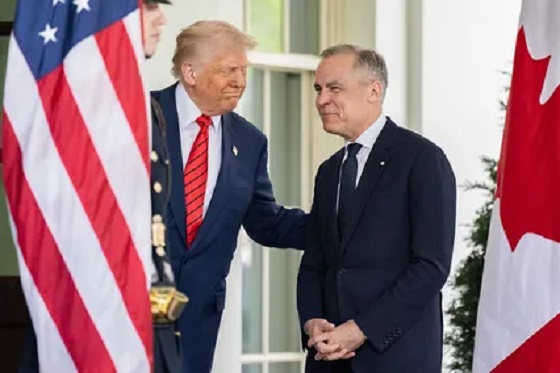
Quick Hit:
President Trump on Thursday confirmed a sweeping new 35% tariff on Canadian imports starting August 1, citing Canada’s failure to curb fentanyl trafficking and retaliatory trade actions.
Key Details:
- In a letter to Canadian Prime Minister Mark Carney, Trump said the new 35% levy is in response to Canada’s “financial retaliation” and its inability to stop fentanyl from reaching the U.S.
- Trump emphasized that Canadian businesses that relocate manufacturing to the U.S. will be exempt and promised expedited approvals for such moves.
- The administration has already notified 23 countries of impending tariffs following the expiration of a 90-day negotiation window under Trump’s “Liberation Day” trade policy.
Diving Deeper:
President Trump escalated his tariff strategy on Thursday, formally announcing a 35% duty on all Canadian imports effective August 1. The move follows what Trump described as a breakdown in trade cooperation and a failure by Canada to address its role in the U.S. fentanyl crisis.
“It is a Great Honor for me to send you this letter in that it demonstrates the strength and commitment of our Trading Relationship,” Trump wrote to Prime Minister Mark Carney. He added that the tariff response comes after Canada “financially retaliated” against the U.S. rather than working to resolve the flow of fentanyl across the northern border.
Trump’s letter made clear the tariff will apply broadly, separate from any existing sector-specific levies, and included a warning that “goods transshipped to evade this higher Tariff will be subject to that higher Tariff.” The president also hinted that further retaliation from Canada could push rates even higher.
However, Trump left the door open for possible revisions. “If Canada works with me to stop the flow of Fentanyl, we will, perhaps, consider an adjustment to this letter,” he said, adding that tariffs “may be modified, upward or downward, depending on our relationship.”
Canadian companies that move operations to the U.S. would be exempt, Trump said, noting his administration “will do everything possible to get approvals quickly, professionally, and routinely — In other words, in a matter of weeks.”
The U.S. traded over $762 billion in goods with Canada in 2024, with a trade deficit of $63.3 billion, a figure Trump called a “major threat” to both the economy and national security.
Speaking with NBC News on Thursday, Trump suggested even broader tariff hikes are coming, floating the idea of a 15% or 20% blanket rate on all imports. “We’re just going to say all of the remaining countries are going to pay,” he told Meet the Press moderator Kristen Welker, adding that “the tariffs have been very well-received” and noting that the stock market had hit new highs that day.
The Canadian announcement is part of a broader global tariff rollout. In recent days, Trump has notified at least 23 countries of new levies and revealed a separate 50% tariff on copper imports.
“Not everybody has to get a letter,” Trump said when asked if other leaders would be formally notified. “You know that. We’re just setting our tariffs.”
Business
UN’s ‘Plastics Treaty’ Sports A Junk Science Wrapper
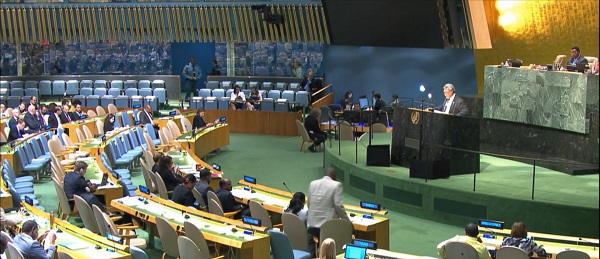

From the Daily Caller News Foundation
By Craig Rucker
According to a study in Science Advances, over 90% of ocean plastic comes from just 10 rivers, eight of which are in Asia. The United States, by contrast, contributes less than 1%. Yet Pew treats all nations as equally responsible, promoting one-size-fits-all policies that fail to address the real source of the issue.
Just as people were beginning to breathe a sigh of relief thanks to the Trump administration’s rollback of onerous climate policies, the United Nations is set to finalize a legally binding Global Plastics Treaty by the end of the year that will impose new regulations, and, ultimately higher costs, on one of the world’s most widely used products.
Plastics – derived from petroleum – are found in everything from water bottles, tea bags, and food packaging to syringes, IV tubes, prosthetics, and underground water pipes. In justifying the goal of its treaty to regulate “the entire life cycle of plastic – from upstream production to downstream waste,” the U.N. has put a bull’s eye on plastic waste. “An estimated 18 to 20 percent of global plastic waste ends up in the ocean,” the UN says.
As delegates from over 170 countries prepare for the final round of negotiations in Geneva next month, debate is intensifying over the future of plastic production, regulation, and innovation. With proposals ranging from sweeping bans on single-use plastics to caps on virgin plastic output, policymakers are increasingly citing the 2020 Pew Charitable Trusts report, Breaking the Plastic Wave, as one of the primary justifications.
But many of the dire warnings made in this report, if scrutinized, ring as hollow as an empty PET soda bottle. Indeed, a closer look reveals Pew’s report is less a roadmap to progress than a glossy piece of junk science propaganda—built on false assumptions and misguided solutions.
Pew’s core claim is dire: without urgent global action, plastic entering the oceans will triple by 2040. But this alarmist forecast glosses over a fundamental fact—plastic pollution is not a global problem in equal measure. According to a study in Science Advances, over 90% of ocean plastic comes from just 10 rivers, eight of which are in Asia. The United States, by contrast, contributes less than 1%. Yet Pew treats all nations as equally responsible, promoting one-size-fits-all policies that fail to address the real source of the issue.
This blind spot has serious consequences. Pew’s solutions—cutting plastic production, phasing out single-use items, and implementing rigid global regulations—miss the mark entirely. Banning straws in the U.S. or taxing packaging in Europe won’t stop waste from being dumped into rivers in countries with little or no waste infrastructure. Policies targeting Western consumption don’t solve the problem—they simply shift it or, worse, stifle useful innovation.
The real tragedy isn’t plastic itself, but the mismanagement of plastic waste—and the regulatory stranglehold that blocks better solutions. In many countries, recycling is a government-run monopoly with little incentive to innovate. Meanwhile, private-sector entrepreneurs working on advanced recycling, biodegradable materials, and AI-powered sorting systems face burdensome red tape and market distortion.
Pew pays lip service to innovation but ultimately favors centralized planning and control. That’s a mistake. Time and again, it’s been technology—not top-down mandates—that has delivered environmental breakthroughs.
What the world needs is not another top-down, bureaucratic report like Pew’s, but an open dialogue among experts, entrepreneurs, and the public where new ideas can flourish. Imagine small-scale pyrolysis units that convert waste into fuel in remote villages, or decentralized recycling centers that empower informal waste collectors. These ideas are already in development—but they’re being sidelined by policymakers fixated on bans and quotas.
Worse still, efforts to demonize plastic often ignore its benefits. Plastic is lightweight, durable, and often more environmentally efficient than alternatives like glass or aluminum. The problem isn’t the material—it’s how it has been managed after its use. That’s a “systems” failure, not a material flaw.
Breaking the Plastic Wave champions a top-down, bureaucratic vision that limits choice, discourages private innovation, and rewards entrenched interests under the guise of environmentalism. Many of the groups calling for bans are also lobbying for subsidies and regulatory frameworks that benefit their own agendas—while pushing out disruptive newcomers.
With the UN expected to finalize the treaty by early 2026, nations will have to face the question of ratification. Even if the Trump White House refuses to sign the treaty – which is likely – ordinary Americans could still feel the sting of this ill-advised scheme. Manufacturers of life-saving plastic medical devices, for example, are part of a network of global suppliers. Companies located in countries that ratify the treaty will have no choice but to pass the higher costs along, and Americans will not be spared.
Ultimately, the marketplace of ideas—not the offices of policy NGOs—will deliver the solutions we need. It’s time to break the wave of junk science—not ride it.
Craig Rucker is president of the Committee For A Constructive Tomorrow (www.CFACT.org).
-
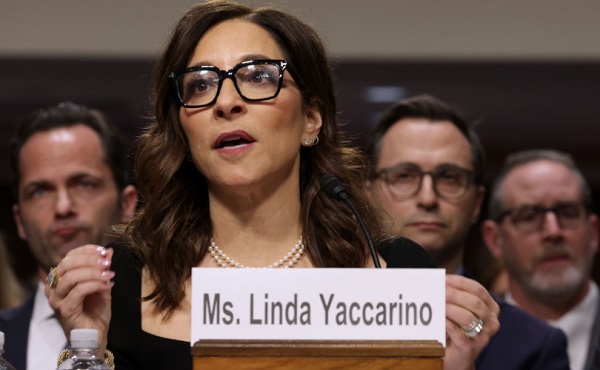
 Business2 days ago
Business2 days agoWEF-linked Linda Yaccarino to step down as CEO of X
-

 Automotive2 days ago
Automotive2 days agoAmerica’s EV Industry Must Now Compete On A Level Playing Field
-

 Business2 days ago
Business2 days ago‘Experts’ Warned Free Markets Would Ruin Argentina — Looks Like They Were Dead Wrong
-

 International2 days ago
International2 days agoSecret Service suspends six agents nearly a year after Trump assassination attempt
-

 Bruce Dowbiggin1 day ago
Bruce Dowbiggin1 day agoThe Covid 19 Disaster: When Do We Get The Apologies?
-

 Alberta1 day ago
Alberta1 day agoFourteen regional advisory councils will shape health care planning and delivery in Alberta
-

 Alberta1 day ago
Alberta1 day agoAlberta school boards required to meet new standards for school library materials with regard to sexual content
-
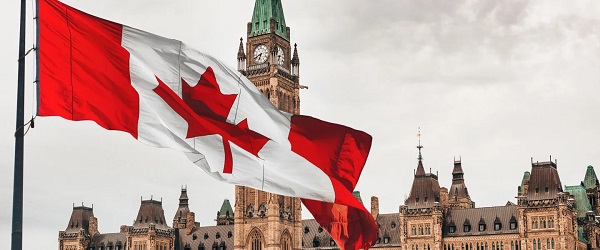
 Business1 day ago
Business1 day agoCarney government should recognize that private sector drives Canada’s economy

